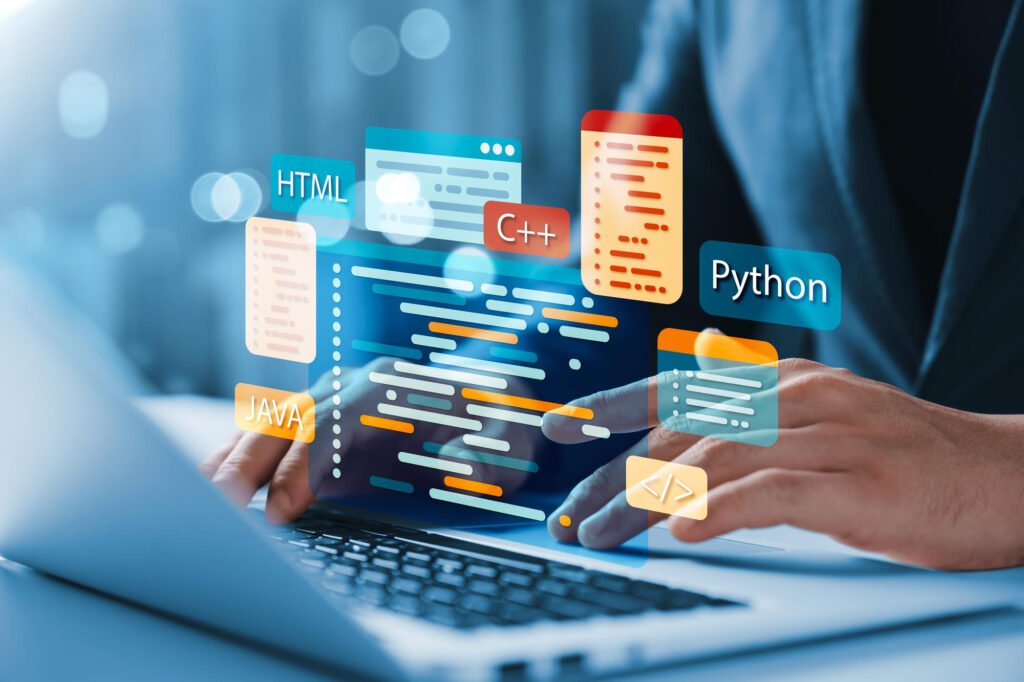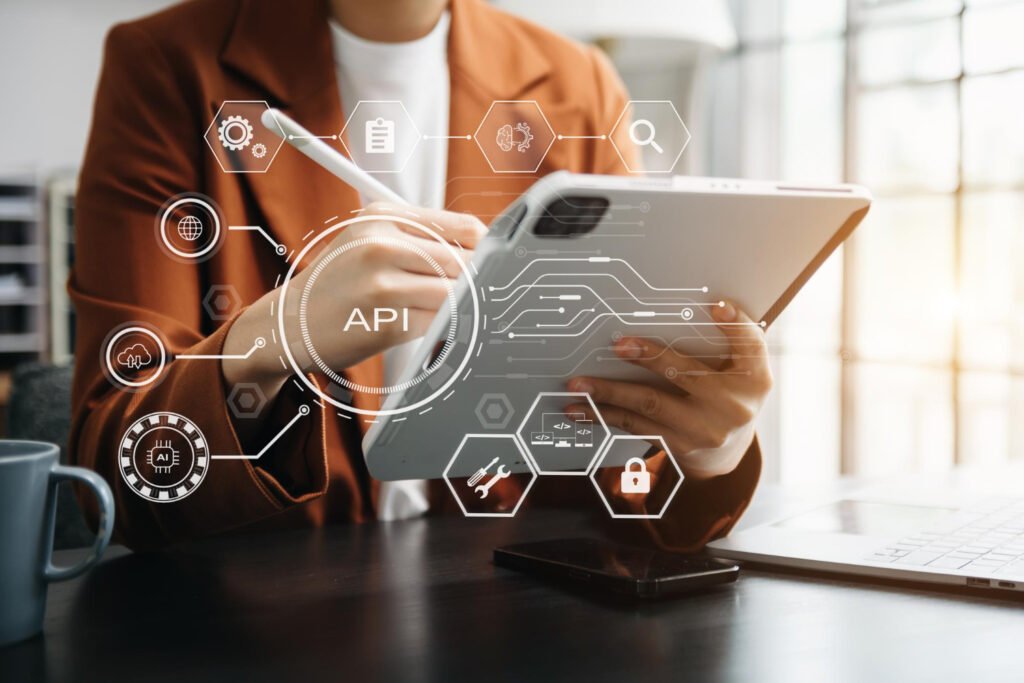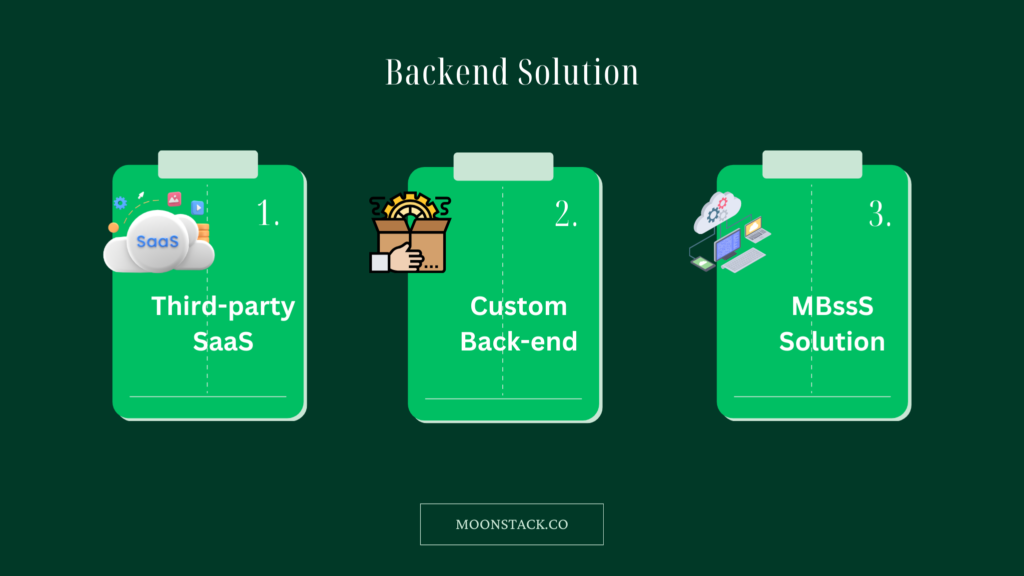How to Become a Cybersecurity Engineer in 2025?


Smartphones and other mobile gadgets have become a vital part of our daily lives as the demand for always-on computing has grown. Smartphone Applications are the device’s main selling feature.
The typical smartphone user has numerous apps installed and uses them frequently. Meanwhile, some people rely on apps to place online food orders, while others use them to communicate with loved ones who live nearby or far away. Many people use apps to stay up to date on the latest news and market trends, as well as to plan trips and organize travel logistics.
The broad availability of sophisticated and convenient mobile applications has transformed the way most businesses operate.
What is backend app development?
Getting through the day without your favorite electronic devices is inconceivable. As soon as you open your eyes, you grab your phone and start browsing through your newsfeed. The term “frontend” refers to everything visible on a mobile device’s screen, whereas “backend” refers to everything else.
The user sees images, buttons, and animations on the frontend (client side). Frontend engineers often cooperate with UI/UX designers because their jobs are so closely related. The functionality of buttons, links, and other types of navigation is completely dependent on them.
When you search, send a message, or download data, the backend, a server-side component, handles your request. It is the hidden but critical component with which users are continually interacting. Mobile app development on the back end focuses on an app’s internal workings, including its logic, infrastructure, and architecture.
The server, application, and database make up the backend infrastructure. The backend’s primary job is to manage data storage and retrieval, interface with the frontend, and transmit and receive data that will eventually be presented as an output.
But don’t worry about mastering every technical element. You should hire pros to address this situation. Contact the specialists at Moonstack .
Difference between frontend and backend:

The frontend of the app includes everything that visitors see and interact with, such as the layout, menus, messages, photographs, videos, and other material. This comprises both the graphical user interface (GUI) and the visual components. In contrast, the backend of an app is inaccessible to visitors and users. The focus is on figuring out how things operate.
1. Frontend Versus Backend Role Backend
Although they are not the same, they are complementary: both are required for the app to function properly. Frontend refers to an app’s visible and interactive components. Backend app development, on the other hand, includes all procedures that occur behind the scenes. It mostly functions as a facilitator for the frontend of apps.
2. Front-End and Mobile Backend Developer
The most common job title in frontend APP development is “App developer,” and the app developer’s major role is to construct or redesign apps with the user experience in mind. Backend developers guarantee that the frontend receives the information and services it need on a consistent basis. Additionally, mobile Backend developers oversee everything that happens behind the scenes.
3. A primer on the front end versus the backend
The frontend of an application is the section with which the user interacts, often known as the “client side,” in contrast to the backend, which is the “server-side” of the application. Common backend app development languages include NodeJS, Java, Ruby, Python, PHP, and .Net. Frontend languages include Swift, Java, HTML, and CSS and JavaScript are quite popular..
Role of Backend Mobile App Development:
When designing software, always keep the end user in mind. The software’s primary goal is to provide users with all of the tools they need to execute their jobs. As a result, good backend development will make it easier to design fully working software that meets all of the demands of potential clients. You can only create software if you have a backend developer on staff.
Even if the user interface is appealing and captivating, it won’t matter if the underlying program isn’t working. The backend is responsible for database interactions and ongoing calculations, and the system’s efficiency is determined by its design.
The most crucial aspect of any application’s development process is backend development.
Types of Mobile App Backends:
The significance of the backend in mobile app development has been established; now, let us consider the various backend solutions accessible.
The backend of a mobile app is similar to the various food options in a grocery shop. There are many food alternatives available, including restaurants, frozen foods, fresh fruits and veggies, meats, dairy products, and more.
In this example, third-party backend systems are restaurants with predetermined menus, payment processing, and quick service. MBaaS (mobile backend as a service) solutions are similar to frozen dinners, which can be brought home and reheated anytime a craving strikes. A bespoke backend solution may be the creation of a meal from scratch.
Let us take a close look at the three server-side components of mobile apps:

1. Third-party mobile app backend solutions— Solution-as-a-Service (SaaS).
In many cases, there is already a product that can do what you want. The front end of your app can be linked to a platform’s backend solution (service) for a monthly or annual fee.
Such services are commonly known as software-as-a-service (SaaS) solutions or mobile app backends. A third-party backend offers a turnkey solution. You connect to the front end, sign up for a plan, and then start the app.
2. MBaaS (Mobile Backend as a Service)
Third-party backend solutions may work for simple apps, but they are insufficient for more complex applications. Apps require a strong backend to successfully store user data, allow login/registration, provide authentication, and provide push notifications.
MBaaS allows you to give all of these benefits by merging your existing components with a server-side framework. MBaaS allows you to include functionalities in your code that are not possible with pre-built libraries and features.
MBaaS is a more customizable alternative to SaaS, making it a good solution for enterprises who need functionality without extending their infrastructure.
The framework supplied by MBaaS can be customized to meet your requirements. To build a more comprehensive app, developers can employ reusable components and pre-populated libraries rather than constructing a backend from scratch.
Monthly MBaaS rates are determined by parameters such as the number of users, the volume of notifications sent, and the total monthly traffic to and from the application.
3. Customized Mobile App Backend Solution
If you require substantial flexibility and agility for the backend of your mobile app, creating a custom solution is the best option. A one-of-a-kind backend is built from the ground up with the help of an experienced team of backend engineers.
Building your infrastructure and employing your backend mobile app development team gives you more flexibility and control, but it comes at a cost.
However, if you are concerned about the program’s performance and security and want to construct a highly scalable app, a bespoke backend is your best option.
Building an app from the ground up, with no external dependencies and few API (Application Programming Interface) connections, can set it apart from the competition in this age of increased privacy concerns.
Advantages Of Backend Development:
1. Quick Rate of Progress
2. Pay Attention to Your Main Function
3. Superior Results in Less Time
4. Faster Product Launches
5. More Functions for Mobile Apps
6. Cloud infrastructure outsourcing
7. Continual Delivery and Integration
How Can Moonstack Affect Your Backend Mobile App Development Journey?
Moonstack is a well-known name in mobile app development services and employs specialist mobile app developers.
Several clients have depended on Moonstack to help them build a strong foundation for their mobile app backend infrastructure. Our skilled staff is available to help you choose a backend app solution for your next mobile app development project.
Connect with Moonstack
Ready to take the first step towards unlocking opportunities, realizing goals, and embracing innovation? We're here and eager to connect.


